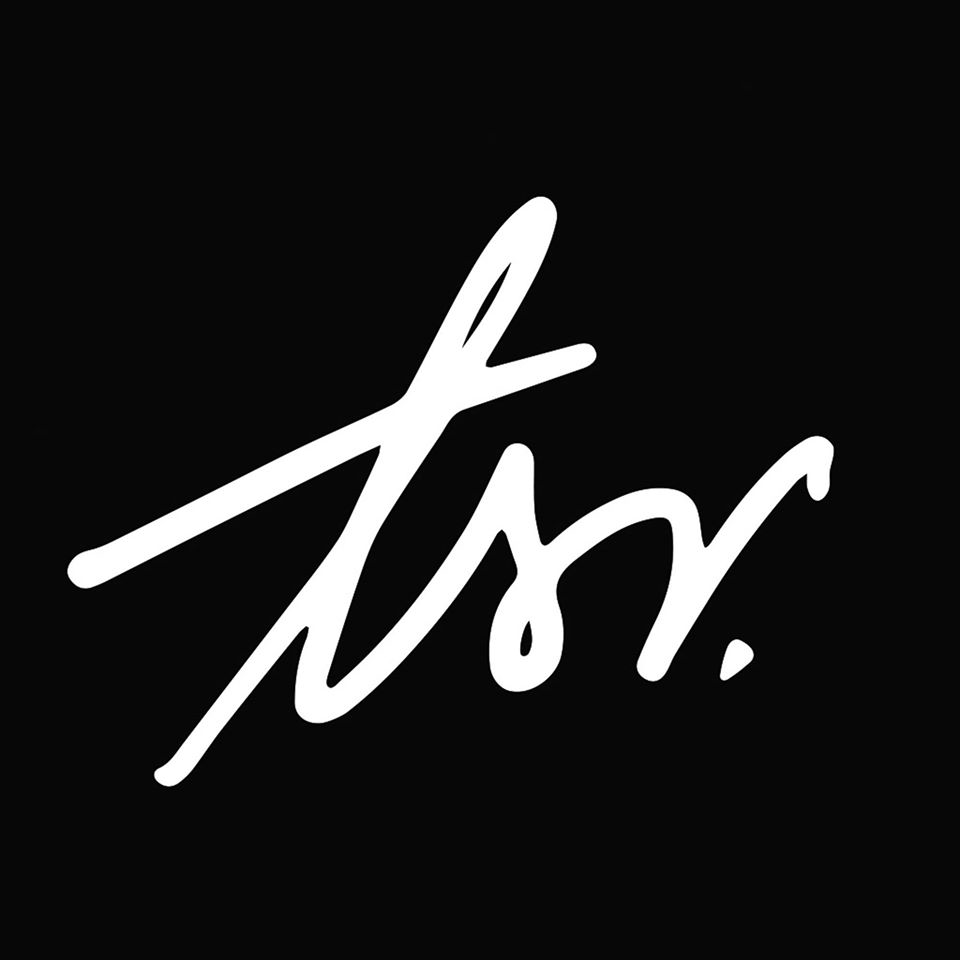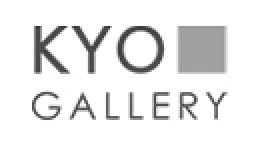INTERVIEW
Your latest project, “Blinkered”, is a series of large-scale abstract works with reduced pallet colour inspired by photographic landscapes. Tell me more about this project?
Have you ever walked on an empty beach, looked at a lake at sunrise or wandered in a dark winter forest just to be flooded by memories from a distant past? Of the last day of summer vacations, a family stroll during winter holidays, the fear of getting lost in the woods or having fun by the lake without a care in the world? Or any other conglomerate of memories and emotions you had in the past? It happens to me quite often. It brings back memories of a specific place, its smell and, sometimes, the sounds associated with it.
When painting landscapes, I always have a specific view, situation and emotions I experienced in mind. I endeavour to transfer them onto canvas in a way that is both non-obvious and as simple as possible.
When looking for inspiration, I often get lost in secluded locations, venturing into roads that no one ever visits. To me, both searching for memories and transferring them onto the canvass are forms of meditation. I noticed that, in the viewers, my paintings often bring about memories and emotions which are totally different from my own. And, probably, this is the whole point. Art should not be just an ornament in the apartment but the window to the memories and experiences we can revisit every time we look at it.
What was the process of creation?
It depends. There are two processes: the emotional and the technical one.
On the technical side, when inspiration has matured, I often start with a sketch in colouring markers. I check the initial proportions and the colour scheme. Then, I transfer the sketch onto the canvas, often in several dozen layers of paint. Sometimes, at various stages of drying, they are torn off to reveal the underlying colours. I experiment a lot with non-obvious media and tools. My texture and structure, which, compared to the calm nature of the whole painting, often gives the impression of being aggressive and disturbing, plays a vital role in building the composition. I love micro-details, which take long and tedious hours to paint and tend to go altogether unnoticed. When I paint, I usually listen to music. It drives emotions that I want to pour into the picture. As a habit, I start working on new projects at night when there are fewest distractions.
When it comes to the emotional process, I usually go through the old familiar sine-wave pattern:
It’s gonna be great, I can already feel it! * It looks good but let’s add something. * Oops, that’s not it. * Let’s fix it. * Let’s destroy it. * Oh no, it’s terrible! It’s so shamefully horrible I have to burn it! * … how about adding something, will it fix the problem? Nope, now it’s even worse! * I am such a failure! What’s the point of all that?! * How about some wine? Maybe that will help? * I’ll come back to the canvas next week. * Maybe I’ll add something? * Wait, there is hope, after all… * Okay, something will come of it. * It’s not that bad! * But it exhausts me… * I need more coffee! That’s that! * I think it’s great! * Nope, let’s leave it till next week… * Oh, it’s such a load of crap! * Gotta wait one more week. * But hey! The longer I look, the more ok it seems to be! * Fine, let’s finish it!
The process of creation is always an emotional roller-coaster. Paradoxically, it brings about more bad emotions than good ones. But, maybe, this is how you vent them.
What are some of your favorite experiences as an artist?
I only like the very process of creation. My dissatisfaction grows the minute I put the brushes aside and accept the work to be finished. The very next day it begins to revolt me. Couple days pass and I start getting used to it. Paradoxically for me, being an artist brings more negative than positive emotions. Sometimes, I obsessively deliberate the work, hesitating whether or not to take it a step further, or leave it be as is. Emotions are the main creative mechanism for me, and the most unhealthy and poisonous of those seem to work best for me. Spontaneous selection of dark colours brings me on the verge of depression, which persists at the time of painting. It is a relief to finally present it to someone. The fact that paintings outlive their authors is probably the most motivating thing. In fact, people spend much more time with them than myself…
How did you first get interested in your medium, and what draws you to it specifically?
For many years I was particularly committed to drawing with pencil and fineliner. Then, already as a graphic designer and photographer, I discovered colours. The discovery rendered the black and white world much deficient. I decided that I wanted to try acrylics, then acrylics combined with pastels, then with charcoal, and recently I have taken interest in oil painting. Acrylics remain most impressive though, given the amounts of available media, the drying time, and the possibility of using non-standard tools for applying paint to the canvas. The tools I use can be found in the inventory of DIY stores: sponges, packs, rags, pallet knifes.
You also work with clients on commissioned pieces. How do you find the balance between what the client has in mind and your artistic vision?
Fortunately, so far, I have been dealing with very understanding clients. Being familiar with my paintings, they know very well what to expect and give me a lot of freedom. When working on commission, it is tremendously helpful to get deeply acquainted with the client’s expectations. It is also crucial to see the interiors where the painting is going to dwell. Then, there comes the phase of colour sketches and visualizations on a specific wall. Most often, this phase reveals whether my proposition meets the client’s expectations or not. Of course, many times during the whole creative process, the painting wants to stray from the intended plan. Sometimes, the emotions bring so much frustration that I start working on an alternative piece, unhindered by the initial plan and not limited by the client’s expectations. If they are lucky, the clients can see the alternative version when collecting the finished work. They even get to choose the preferred painting. Ultimately, both the artist and the viewer must be satisfied with the result. I simply couldn’t submit a commissioned piece of art that fails to fulfil my own expectations.
For me, communication with the client is the key to success. At various stages of creation, we meet in my atelier (in person or online). Getting to know my process from start to finish allows the client to immerse into my world and see my work from a different perspective. Building this type of relationship often translates into future cooperation.
If you couldn’t be an artist, what would you be?
A carefree, eccentric millionaire with a hippie soul, or the owner of a bar on a Mexican beach.
What was the best advice given to you as an artist?
A cup for coffee should be plainly distinguishable from a cup of dirty water from brushes.
Music or silence?
Definitely music! Something to maintain the existing mood, usually different from what I listen to every day. Fever Ray, Agnes Obel, the soundtrack from “Vikings” – heavy and depressive. Sometimes I listen to the albums over and over again, sometimes a dozen times.
Who are some of your favorite artists?
Francis Bacon, Lucian Freud, Mark Rothko, Mark Bradford … and who doesn’t like Banksy today?
Recently, you won the first prize at Europartfair in Amsterdam. What was the impact of winning this prize?
It was an exciting and valuable experience to participate in the fair of such a high artistic level, among very talented attendees. Especially granted by gallery representatives and curators, the award was a pleasant surprise. It showed me that my art is recognizable and can be appreciated both at home and abroad.
Your work matches well with the highly stylish interiors of luxury apartments bringing warmth and calmness. So how do you engage collectors and interior designers in the dialogue about your practice?
Oh, that’s one of the phases that I’m not too fond of. I’m less of a salesperson and more of a walking faux pas. Even though the current times and the situation require it, I avoid forcing potential clients to look at my art. If there is a chance, I leave the task to galleries and art dealers. It is different at fairs and exhibitions, though, where people interested in my work have a chance to meet me. I find those conversations most curious and, sometimes, they lead me to unexpected places!
Why do we need art in our homes and offices? What sorts of emotions can art bring to interiors?
There are many good answers to those questions. I’ve met people who fell in love with a painting because it transported them to long-forgotten places or reminded them of the last vacation with their deceased parents. I’ve also met clients who decided to buy a piece of art because it matched the cushions in their living room.
As a viewer of art, I think a painting on your wall tells more about you than anything else in your apartment. A work of art is one of those rare things which are not machine-made. It is individual and unique. It tells a story that you can take, interpret and retell to your guests. Whenever you look at it, even for a short while, it brings back the emotions that accompanied you when you saw it for the first time, and the longer you look, the more new things you can see. In that peaceful moment, you can take your time and reflect on the value of the moments you have lived.
Can you recall your beginnings? Do you have any inspirational stories to share with younger people wishing to become an artist?
Fortunately, from the start, I didn’t need to rely on art as my only source of income. It was only a form of therapy and meditation. The occasional sale of a piece was nothing but a nice tickle of the ego. Years later, painting turned out to be a full-time job that is slowly beginning to take off commercially, however, this success is of secondary importance. I don’t think I am yet in the position to advise others on how to navigate their artistic career. However, what works for me is consistency, rudimentary self-discipline, and insatiable curiosity.
You are going to participate at the art fair Carrousel du Louvre this autumn. What artworks are you planning to present to the highly demanding French audience?
I believe each viewer of art is equally demanding. The question is can you, the artist, zero in on their needs or not? And, in turn, can they see what you wanted to convey in your work? I do not paint pieces catering for particular events. To me, it’s business as usual. First, I pack up the paintings which I have available in store. Then, I plan the exhibition, hoping it will guide the viewers through the full range of emotions accompanying my creative process, in hope one of those emotions will draw their attention.
What inspired your artwork “Inevitable End” I love it.
A long time ago, to get to one of my first jobs (very low-paid and short-termed), I had to get up at dawn and lumber along to the other side of the city on public transport. The final stretch of my commute to the mystical office, that corporate Narnia, I had to plough through the sidewalks buried in snow. Many years later, as a stroll down the memory lane – also in the winter and at the crack of dawn – I revisited that commute. I tried to see some positives in the turbo-bleak landscape and mega-weak memories but found none. Nothing but the sad, empty fields, ditches flooded with water, and withered grey-brown bushes. It was hopeless. That terminus of the commuter bus route in the winter. And the bottomless feeling that nothing in life can change. The conviction that you’re doomed to wade in the knee-deep snow slush until the end of time, trying not to starve… Of course, that impression turned out to be a load crap but memories are memories. They are what they are.
What motivates you as an artist? Is it curiosity, the search for beauty or meaning? And is there a message you are trying to give with your art?
To me, art is a kind of therapy. It’s a process that lets me calm down and, in an organized way, shed the excess of the emotions I’ve been accumulating. It is also a form fight with the pointless but ubiquitous haste, disorder and anxiety that keeps bugging me.
When did you first realize that you have the wonderful gift making art?
I started drawing in my young years, mostly surreal monstrosities, which, inevitably, brought me closer to meeting the school psychologist. Later, as a graphic designer, I dealt with utility graphics and corporate identification. At that time, I considered them to be more of a craft than an art. It was only after I sold the first painting that I thought of my creations as art. The moment when someone is willing to pay, to get into possession of some of your emotions and hang them on the wall, is amazing.
What’s your favourite artwork you’ve ever done?
It’s hard to choose just one piece. In the process of creation, I build a relationship with each of my works. I finish them, and then, alternately, see them as good or utterly bad. But, when I finally part with the painting, I usually find it to be not so bad after all. Mostly, however, it’s those whose creation brought me the greatest emotions that I remember the longest.
If you could have one piece of art in your life, what would it be?
I don’t think I could keep looking at a single piece of art, no matter how good it would be. Just as I couldn’t use only one colour, over and over watch one movie, or listen to just one song.
What memorable responses have you had to your work?
When I started painting, my mom told me “not to worry [about my results] because she had seen worse crap in art galleries”. Perhaps that’s what motivated me to improve my skills.













